Engineered Appetite
What happens when markets meet evolutionary psychology
Cheap food is plentiful in many parts of the world, and most of it is made to be eaten in abundance—a market success with a twist.
We have been talking a lot about food lately.
We discovered that humanity has escaped historical malnutrition by feeding 8 billion people more calories than ever before. This is a remarkable feat.
Only we've created a dangerous paradox. Billions face obesity while 750 million remain hungry, all sustained by a food system that makes us "eat oil" through fossil fuel-dependent agriculture.
The Calorie Paradox
The average daily energy consumption is above the 2,500-kilocalorie threshold required to maintain human body weight in all world regions, which is a remarkable achievement.
We also discovered that aquaculture is more than crate after crate of tinned salmon. This rapidly expanding industry is an excellent example of why mindful sceptics use pragmatic optimism to determine what is sustainable.
Fish On Friday
Demand and the nutritional benefits of fish have produced a phenomenal rise in aquaculture. Is fish farming the answer to sustainable seafood?
In this issue, we examine the broader food system and see how market forces have readily met the demand for cheap food through efficient production and ultra-processed products that are easy to transport, prepare, and eat.
Sounds like a success story until we dig a bit deeper.
But before we start, here is an anecdote.
The pickled onion dilemma
I like pickled onions.
When I was a kid, I had to walk home from school past a local fish and chip shop, where a portion of the famous British fried chips was available for a few pence. On the counter was a huge jar of pickled onions, the catering variety with onions way too big for a normal-sized jar.
If lucky, I’d have a few pence extra to purchase a tangy delight. More often, I had to make do with the pickled onion vinegar on the chips.
These days, the tangy delights go into almost every lunchtime salad. It's not any pickled onion, mind you; it has to be the sweet pepper variety sold in Coles supermarkets.
I have scoured the shelves and tested the bewildering choice of pickled vegetables to find my preference, especially for the sugary but acidic onions, through much trial and error.
Sometimes my favourite brand is sold out, so I go without or explore another of the myriad varieties that usually confirm why my favourite still is.
The origins of the pickled onion go deep. They are tied to the ancient food preservation technique of pickling, which dates back to Mesopotamia around 2400 BCE.
Various cultures independently began pickling onions due to the vegetable's global cultivation, but the modern pickled onion is most famously associated with the, wait for it… British culinary tradition.
My staple of small pearl onions preserved in malt vinegar was popular as far back as the 1700s, particularly as a key component of the classic "ploughman's lunch" served in pubs.
As a naturalised Australian citizen, perhaps I cling to the pickled onion as a reminder of my heritage and Theakston’s Old Peculiar.
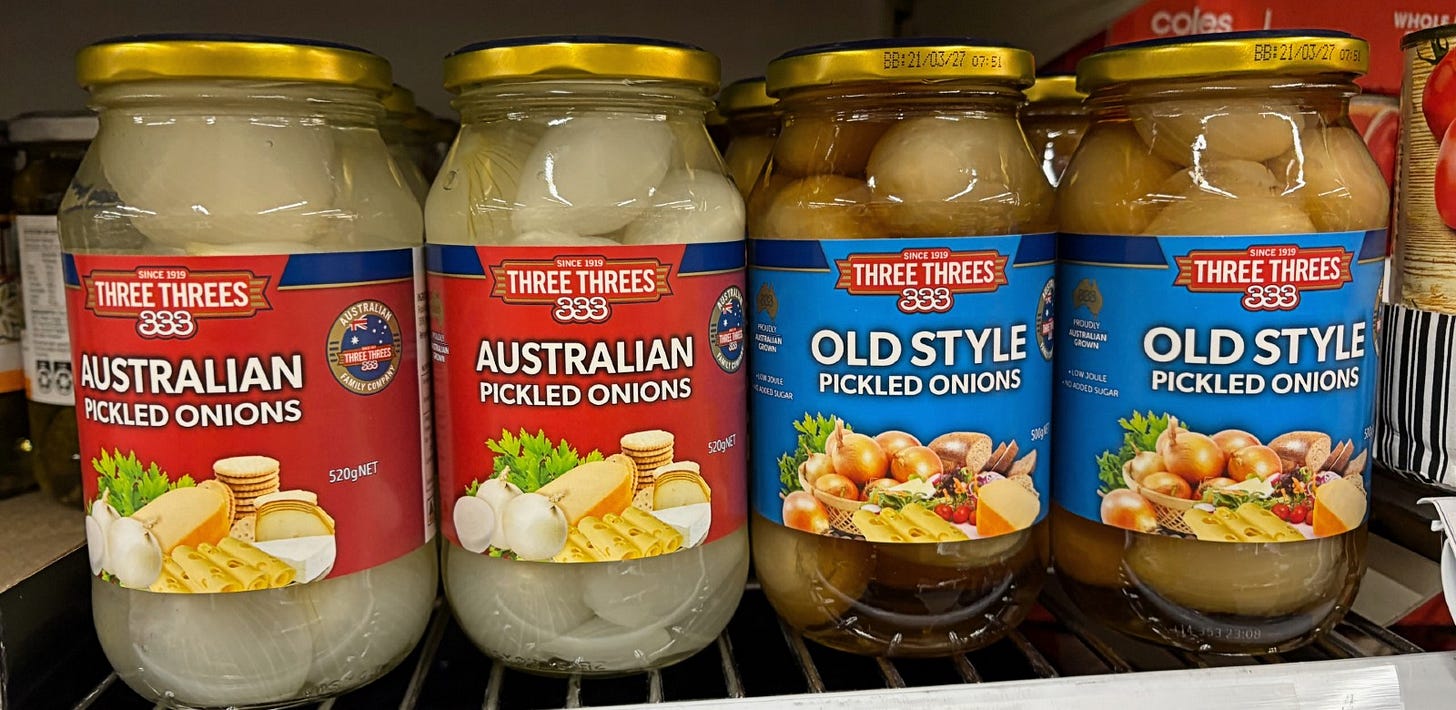
Pickled onions are an example of food that I like.
One of the more remarkable consequences of the Industrial Revolution, capitalism and the globalisation of market forces is that the food people like has become ubiquitous.
People want to eat
People eat a lot if given the opportunity.
The most recent WHO estimate from 2022 is that 2.5 billion adults over 18 were overweight, 43% of the global adult population. Worldwide, adult obesity has more than doubled since 1990, and in 2022, 16% of adults aged 18 years and older were living with obesity.
Worse still, estimates from 2019 indicated that 38.2 million children under the age of five were overweight or obese.
People want to eat what tastes good. Typically, that involves sugar, salt, and fat with a grain carrier; our preference for such dense calorific intake is programmed into us from our evolutionary past.
For most of human history, our ancestors lived as hunter-gatherers in environments where calories were scarce and food availability was unpredictable. In that context, a critical survival advantage was developing a strong preference for foods that pack the most energy into the smallest package.
In nature, a sweet taste almost always signals a safe, high-energy food source, typically ripe fruit. Sugars provide a rapid burst of glucose, the brain's and muscles' primary fuel. This quick carbohydrate energy was vital for physically demanding tasks like hunting, escaping predators, or gathering more food.
Grains, which became a staple after the agricultural revolution, offered a reliable and storable source of carbohydrates that our bodies could easily convert to this essential energy.
Fat is the most calorie-dense nutrient, containing more than twice the energy per gram compared to carbohydrates or protein. For our ancestors, consuming fatty foods from animal sources or rare finds like nuts was an incredibly efficient way to build up body fat reserves. These reserves were essential for surviving lean periods of famine or long winters when food was scarce.
Salt (specifically sodium) is a crucial mineral necessary for fundamental bodily functions, including nerve impulses, muscle function, and maintaining fluid balance. However, natural sources of salt can be hard to find away from coastal areas. Therefore, humans evolved a specific craving for it to ensure they sought it out and consumed enough to survive.
We cannot easily override our DNA and the psychologies coded in it.
Food manufacturers, supermarkets and fast-food chains have cottoned on to deliver on our wants. They know we want the sugary burger, soft drink and salty fries, still hugging the fat that cooked them.
Our brains are still running on ancient survival software that tells us, "This tastes good; it will keep you alive," leading us to consume these foods in quantities that far exceed our energy needs.
Of course, there are powerful influences on people's choices. That pesky evolution also gave us a brain susceptible to persuasion when we see a reward for a choice.
‘Would you like to upsize that?’ has to be the easiest sell ever invented.
The demand side of food, at least in mature economies, appears driven by what people want.
For several reasons, not all of them conscious, they want to eat a lot.
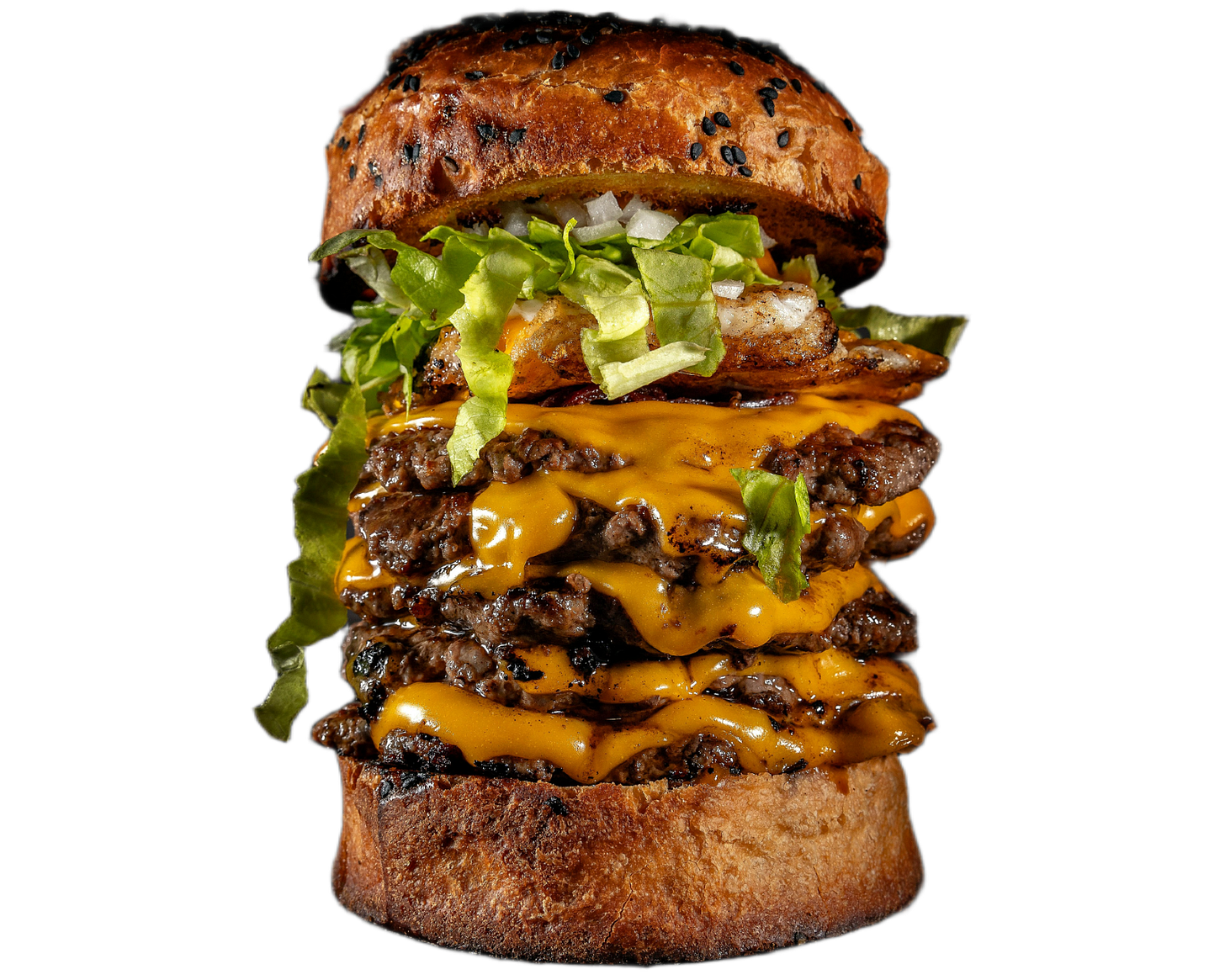
Market power
It is tempting to view this as the market responding to the need.
People like sweet, salty, and fatty food, so supply foods with those tastes at a competitive price, and the market will do what it does best: solve a resource distribution challenge and meet demand.
Intensive agriculture allows market players to meet demand with cheap grains, sugar, and seed oils that can be processed and ultra-processed into a bewildering array of products people like.
This is not a coincidence.
Over human history, around 7,000 plant species have been cultivated for food but modern agricultural practices have whittled this down to roughly 170 crops grown on a commercially significant scale. Just three crops, rice, wheat and maize, supply more than 40% of our daily calories.
Remember that the market is efficient.
It harnesses competition to find the fastest, most efficient ways to get sales that return a profit. For cheap food, the most efficient is to apply economies of scale from size and simplicity at the production end, combined with processing a small number of core ingredients into great complexity at the consumer end.
A supply chain is created that is super-efficient at meeting the demand for food that people like.
The market met the need with a supply of foods that people like to eat.
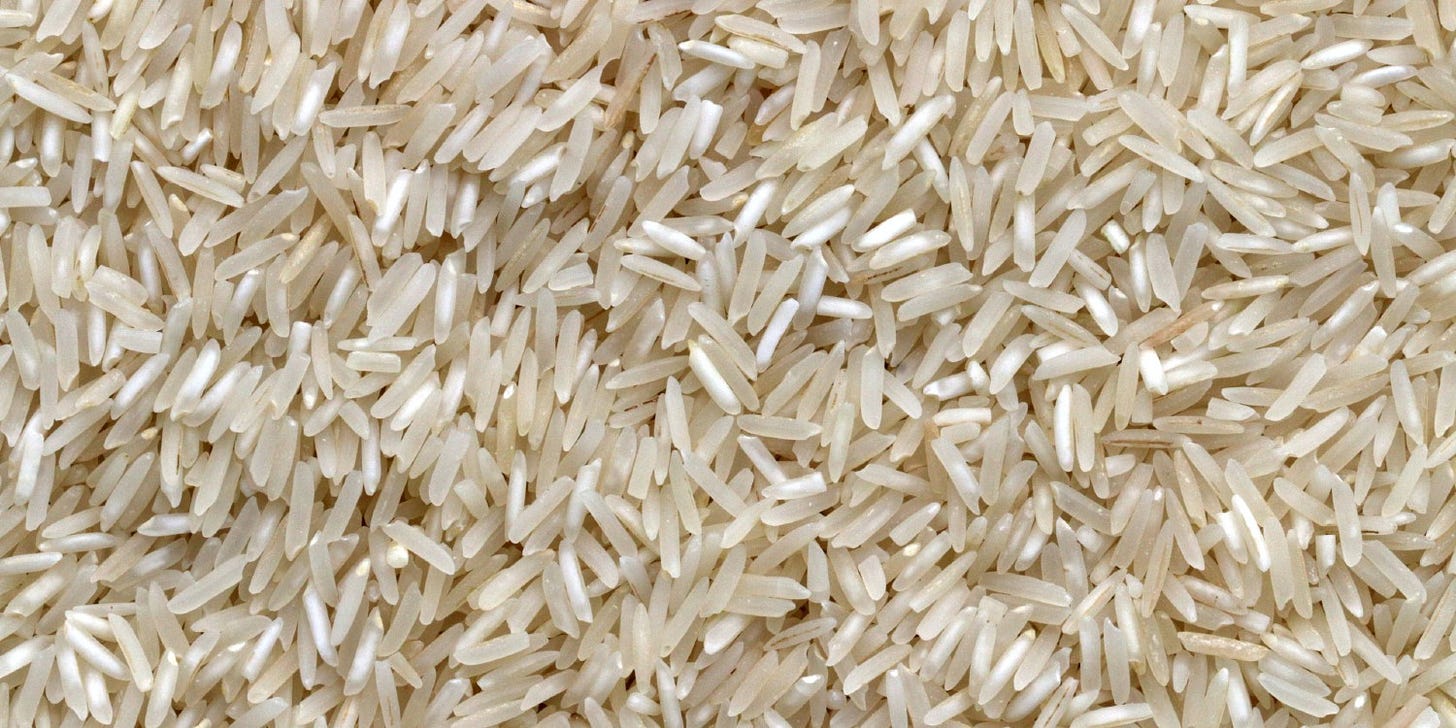
Simplistic demand
People have to eat and, when given a choice, eat what they like.
Consuming too much of what we like disrupts our physiological balance, so meeting demand with empty calories satisfies market requirements but not human health needs.
The market's task is much simpler than maintaining a healthy human body. It generates affordable food that people can buy. It does this as efficiently as possible to profit along the supply chain.
Markets see demand as an opportunity for sales.
Aided and abetted by a massive energy subsidy from fossil fuel use, many players enter the market and rush to the bottom to find the cheapest foods most likely to sell.
Food supply chains grow, store, process, and sell what people like, making it easy for them to consume what they want. Everywhere, this becomes a combination of grains, sugar, meat, and eggs, with small amounts of fruit and vegetables, which are used to make bread, cake, pies, and any meat that accompanies rice or sadza.
As competition at the bottom increases, value is added by maximising the efficiency of supply, for example, through a uniform crop grown at the largest possible scale and by processing the crop into increasingly fanciful delights that are easy to differentiate in the marketing buzz.
Production is simplified to increase efficiency, and complexity is added in processing to compete for customers.
The irony is that grain crops, especially rice, wheat, and maize, that supply nearly half the calories eaten, are on supermarket shelves in a staggering variety of forms.
None of this has anything to do with what people should eat, but it satisfies what they want to eat so efficiently that the human population has quadrupled since the 1950s.
Simplistic demand was met and resulted in more demand.
The market knows how to feed itself.
Consequences of cheap food
This simplification of ingredients across diverse products is happening all over the world. Cheap industrially produced grains can be processed and transported everywhere.
Wherever they arrive, people eat them.
The highlands of Papua New Guinea have young, fertile soils and a cool tropical climate with regular rains, which are perfect for root vegetables. Locals eat sago, sweet potato (kaukau), taro, taro leaf, cassava, breadfruit, and edible leafy greens. The national dish is Mumu, which is composed of pork, sweet potato, rice, and vegetables.
This diet is as healthy as you can get when you live away from the ocean.
I took this picture some years ago on the way out of Mount Hagen airport. It was about to be loaded onto a small plane as a supply run for a remote village.
Apart from tins of meat and vegetables, plus the ubiquitous cans of Coca-Cola, most of this shipment consists of rice and wheat in the form of dried noodles.
Even in remote villages two days' walk from the neighbours, with no road access and centuries-old subsistence food production from the forest and the gardens around the village, it is cost-effective to fly in a carbohydrate subsidy.
Painful as this might be to hear, once that subsidy is started, it must continue because those extra calories produce more people.
What happens is this.
Foods made from refined grains trigger addictive-like responses through a biological cascade that begins with rapid blood sugar spikes.
Strip the grain of fibre and bran, and carbohydrates flood your bloodstream with sugar, prompting your brain to release dopamine and creating that familiar pleasure-reward cycle we see in other addictive behaviours. This initial rush inevitably crashes as insulin manages the excess sugar, leaving you tired, irritable, and craving another quick energy fix.
Meanwhile, gluten proteins break down into gluteomorphins that bind to opioid receptors and produce mild euphoria, adding another layer to the craving cycle.
Refined grains interact with our evolutionary biology, which was designed for occasional energy-dense foods, amplifying natural responses into patterns that can feel genuinely compulsive. We experience a perfect storm of rapid energy delivery, dopamine rewards, and biochemical crashes, making overconsumption feel almost inevitable rather than a simple matter of willpower.
Add some fat, sugar and/or a little salt, and you are looking at an addictive overconsumption drug… or a doughnut.
The Paradox of Plenty
Market forces have brilliantly solved the challenge of delivering what we crave at affordable prices. Through relentless efficiency in production, transportation, and preparation, our food system has become a masterpiece of logistics, making tasty, convenient foods available to billions.
This translates to remarkable abundance for the roughly 2 billion people with substantial disposable income. We live in an era where our preferences, rather than our nutritional needs, drive food availability.
Because these foods are addictive, the challenge isn't scarcity; it's restraint in the face of engineered palatability and rock-bottom prices.
The middle tier tells a more complex story.
About 4 billion people manage a careful balance, spending roughly half their income on food. While global supply chains stretch to reach these consumers, when budgets tighten, the economic reality often defaults toward cheap grains and processed sugars.
Some maintain kitchen gardens and small livestock, but convenience and cost frequently win out.
Here lies the fundamental contradiction.
Global markets excel in abundance but struggle with equity and nutrition. The system that proudly feeds billions has simultaneously created a world where access remains uneven and where what's readily available often diverges from what our bodies need.
Market forces have made the foods we crave almost irresistibly overabundant, creating new challenges even as they solve old ones.
We've engineered a food environment prioritising desire over nourishment, efficiency over equity.
And I need to avoid the sneaky sugar in the pickled onions.
A fascinating paradox
We've stumbled into the reality where market efficiency brilliantly solves the wrong problem.
We're not weak for craving those engineered delights because we're responding exactly as evolution programmed us to respond when survival meant seeking every calorie possible.
My own pickled onion habit serves as a daily reminder that the breakthrough comes when you recognise that your afternoon snack craving isn't a personal failing but the result of sophisticated reverse-engineering of ancient neural pathways.
It also suggests I am unlikely to eliminate my culinary pleasures or achieve some impossible standard of conscious eating. Instead, I might be able to reclaim the space between impulse and action, asking "What systems shaped this wanting?" before reaching for that next bite.
When we understand that the global food system has become three humble crops masquerading in an endless variety, we can choose our pickled onions with full awareness rather than unconscious automation.
That's mindful scepticism at its most practical—and most liberating.
Mindful Momentum
The Craving Detective
For one week, pause before eating any packaged food and ask yourself… "Am I genuinely hungry, or am I responding to engineered taste?"
Notice which foods trigger immediate "more" responses versus those that satisfy naturally.
Keep a simple log of energy levels 30 minutes after eating different foods to identify your personal addiction patterns.
Key Points
Evolutionary pressures programmed humans to crave sugar, salt, and fat as survival mechanisms during periods of scarcity. These preferences, which once ensured survival in hunter-gatherer societies, now create overconsumption in environments where calorie-dense foods are abundant and readily available.
Market efficiency easily amplifies our unhealthy choices. Global food systems have responded to consumer preferences by streamlining production around just a few crops—rice, wheat, and maize supply over 40% of human calories. This agricultural simplification, combined with extensive processing, creates countless variations of essentially the same ingredients while driving down costs and maximising profits.
Refined grains and added sugars create rapid blood sugar spikes that release dopamine and establish pleasure-reward cycles similar to other addictive substances. The removal of fibre and nutrients from whole grains intensifies these biochemical responses, making overconsumption feel compulsive rather than voluntary.
Even in remote regions with abundant local food sources, cheap processed grains and sugars infiltrate traditional food systems. This displacement occurs because industrially produced foods offer convenience and addictive palatability, creating dependencies that can undermine centuries-old sustainable eating patterns and local food security.
Curiosity Corner
This issue of the newsletter is all about…
…how market forces have brilliantly exploited our evolutionary cravings for sugar, salt, and fat to create a global food system that efficiently delivers what we want rather than what we need.
5 Better Questions from this issue of the newsletter…
Who profits when I buy this food product, and what incentives drive their recommendations?
This question shifts focus from individual blame to systemic analysis, helping mindful sceptics understand that food choices exist within profit-driven systems rather than neutral markets.
What biological responses is this food engineered to trigger in my body?
This moves beyond simple good/bad categorisation to examine the mechanisms by which processed foods interact with human physiology, building scientific literacy about addiction pathways.
How many whole food ingredients could I identify in this product before processing began?
This question develops practical skills for recognising ultra-processing while connecting modern products to their agricultural origins, fostering awareness of food system complexity.
What traditional foods did this processed product replace in my cultural background?
This encourages historical perspective and cultural awareness, helping sceptics understand how industrial food systems have displaced traditional knowledge and biodiversity.
What would happen to my local food system if global supply chains were disrupted?
This promotes systems thinking about food security and resilience rather than assuming current abundance is permanent, building awareness of ecological and economic dependencies.
In the next issue
A surprise.
We are introducing a new section to the Mindful Sceptic newsletter. It’s optional, of course, but it will be full of bite-sized curiosity and critical thinking.
More next time.





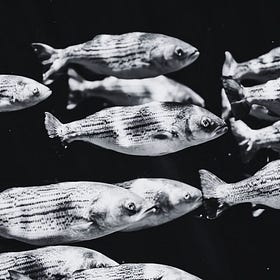
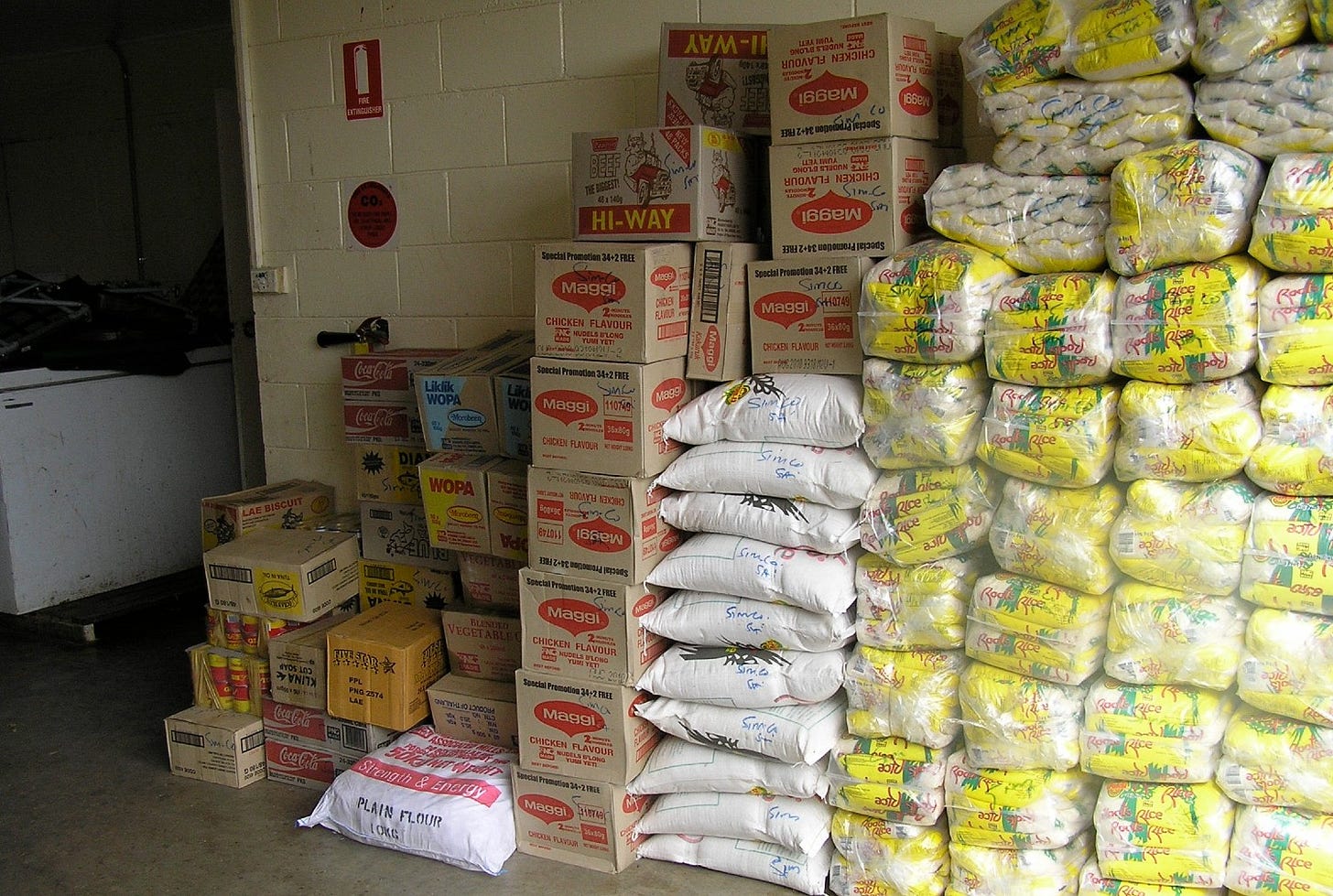
Interesting article. I have put on weight since I moved to the city. I still grow a lot of my own food, but instead of going shopping every second month, I have unlimited access to stuff I don't need. For years, the bulk of my food came from the garden, even most of my carbohydrates came from potatoes and other root vegetables. Protein sources included mainly eggs and dried beans - many of which i grew myself. Sugar ... when I made bread (two loaves every second week) I used sugar, and I used it in preserving some foods. I bought oatmeal, but had that with stewed fruit, which was always sweet enough. I didn't use much sugar, and hardly bought anything with added sugar.
Initially when I moved I kept up the "healthy" diet as much as possible - but it was taking time to establish my garden (still haven't really got there with fruit) and it seemed every time I went grocery shopping the more crap I'd buy until it became a bigger part of my diet. The change was incremental. Today I really need to pick those fava beans. There'll be bucket loads. Some I can save for planting, but the bulk I will probably dry. I have also become lazy, so marinating them while fresh for an extra protein boost in salads over the summer looks like so much work now, and yet its one of the easiest tasks.
Re your pickled onions .... my local fish and chip shop sells their own - and they are available in small jars ... but i have some onions (smallish variety) almost ready. If i get motivated ...